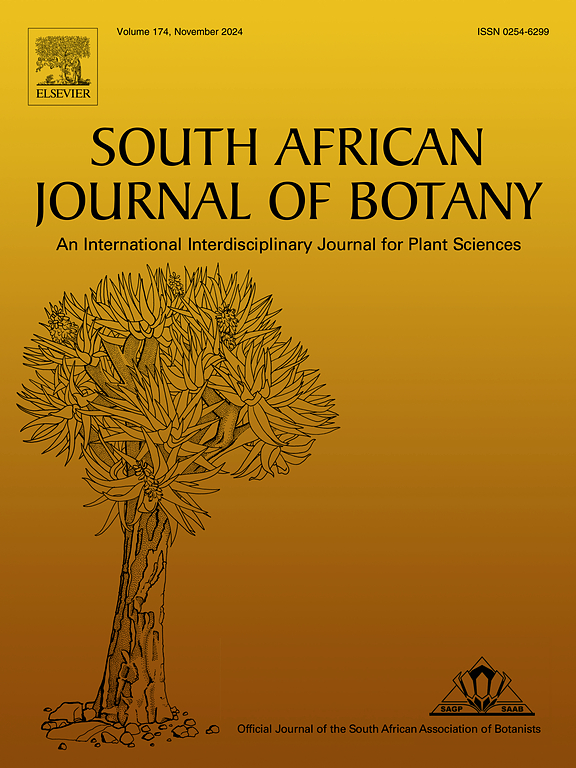母植株的性别影响圆形薯蓣(Dioscorea rotundata, Poir.)后代的性别变异。
IF 2.7
3区 生物学
Q2 PLANT SCIENCES
引用次数: 0
摘要
在栽培山药中,尽管无性繁殖,后代仍发生自发的性别变异。在这项研究中,性别变异作为一种区域(头部,中部或基部)和母株性别的函数进行了研究。从6个品种的块茎头部、中部和基部播种块茎种子,对其后代的萌发、开花和性别进行了研究。为了确定母块茎激素含量与性别变异之间的可能关系,我们比较了雄性、雌性和雌雄同株块茎的头部、中部和基部的植物激素谱。结果表明,块茎部位对种子萌发有一定的影响,头区块茎的发芽率比中部和基部高20 ~ 50%,且发芽期提前10 d。种球的区域对开花率也有影响,头区种球的开花率比基部的高10 - 20%,但对后代的性别没有影响。后代的性别差异更多地与父母的性别有关。雌雄品种后代稳定,雌雄同株品种后代性别变异较大(80%)。块茎的激素特征表明激素和性别认同之间存在关系。雄性和雌雄同株的块茎中茉莉酸盐和水杨酸含量较高,而雌性的块茎中脱落酸、细胞分裂素和苯甲酸含量较高。这些激素在控制圆形山药性别表达中的作用还需要进一步的研究。本文章由计算机程序翻译,如有差异,请以英文原文为准。
The sex of the mother plant affects the sex variation in the offspring in Dioscorea rotundata (Poir.)
In cultivated yams Dioscorea rotundata, spontaneous sex variation occurs in the offspring despite vegetative propagation. In this study, sex variation was investigated as a function of the region (head, middle, or base) of the seed-tuber and the sex of the mother plant. Tuber-seeds were sown from the head, middle, and base regions of tubers of 6 cultivars, and germination, flowering and sex of the offspring were studied. To determine a possible relationship between the hormone content of the mother tuber and sex variation, the phytohormone profile of the head, middle, and base regions was compared in tubers from male, female, and monoecious plants. Our results showed that the region of the seed-tuber affected germination, as the germination rate of seed-tubers from the head region was 20–50 % higher than that of the middle and base regions, and they germinated 10 days earlier. The region of the seed-tuber also affected the flowering rate, which was 10–20 % higher for seed-tubers from the head region than from the base region, but it did not affect the sex of the offspring. Sex variations in the offspring were more related to the sex of the parents. Male and female cultivars had stable offspring, while monoecious cultivars had high sex variation (80 %) in their offspring. The hormonal profile of the tubers suggested a relationship between hormones and sex identity. Jasmonates and salicylic acid were more concentrated in the tubers of male and monoecious plants, while abscisic acid types, cytokinins and benzoic acid were more concentrated in the tubers of female plants. Further work is needed to clarify the role of these hormones in the control of sex expression in cultivated yam D. rotundata.
求助全文
通过发布文献求助,成功后即可免费获取论文全文。
去求助
来源期刊

South African Journal of Botany
生物-植物科学
CiteScore
5.20
自引率
9.70%
发文量
709
审稿时长
61 days
期刊介绍:
The South African Journal of Botany publishes original papers that deal with the classification, biodiversity, morphology, physiology, molecular biology, ecology, biotechnology, ethnobotany and other botanically related aspects of species that are of importance to southern Africa. Manuscripts dealing with significant new findings on other species of the world and general botanical principles will also be considered and are encouraged.
 求助内容:
求助内容: 应助结果提醒方式:
应助结果提醒方式:


